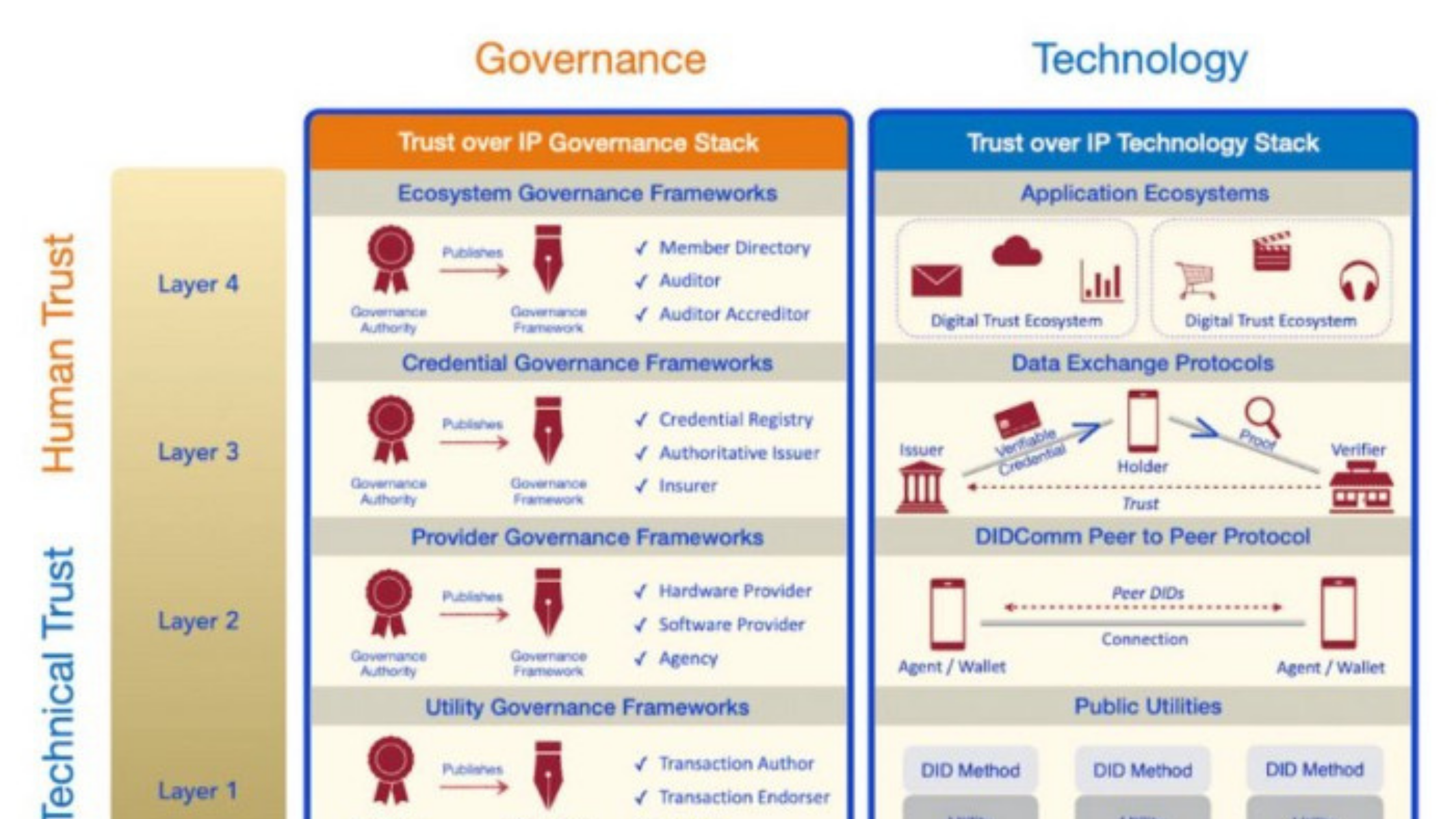Disclaimer: This blog does not cover cheqd’s strategic direction but does build some important foundations for the blogs and announcements to come.
As we began creating the tokenomic model and product roadmap for cheqd, we quickly hit a disconnect between the identity and public blockchain communities. In short, each community uses different semantics. Nowhere is this more evident than in the meaning of “Layer 2” which has wildly different meanings between the two communities.
This isn’t surprising given these communities have historically been segregated, purely by happenstance than desire. In this short blog, we want to establish groundwork to help us bridge the identity & public blockchain communities, as well as preparing for the many future blogs we will be writing detailing out our vision and progress.
Firstly, a quick overview of the layering model used in each community.
Identity

The dual ‘Trust over IP Stack’
Public blockchain
- Layer 1: Base network, i.e. Bitcoin, Ethereum, etc.
- Layer 2: Overlay network, i.e. Lightning, Raiden or Plasma
- Off-ledger solutions: Custodianship, custody wallets, centralized exchanges
Bridging
In the absence of a more comprehensive framework in the public blockchain community, the ToIP stack requires amendments in two areas.
The first is that Layer 1 itself should be broken out into multiple layers to account for the innovations mentioned above, giving us:
- 1.1: Base network, i.e. Bitcoin, Ethereum, etc.
- 1.2: Overlay network, i.e. Lightning, Raiden or Plasma
We recognize that expecting the public-blockchain community to adopt this terminology would be presumptuous but at least hope this will help clean up conversations within the identity community.
More significantly, an “Economy” or “payment“ stack needs adding to the existing “Governance“ and “Technology“ stacks [Full credit to Andy Tobin at Evernym here]. This new stack augments the existing stacks with:
- Layer 1: Tokens to provide the medium of exchange
- Layer 2: Payment protocols to provide the mechanism of exchange
- Layer 3: Payment orchestration plug-ins to implement commercial constructs, such as subscription, transactional or flat fee models for ecosystems
All to create:
- Layer 4: Economies

Overlaying the ‘Trust over IP stack’ with a payment stack
- Economies within the “Economy“ stack, are simply Ecosystems with commercial structures / relationships whether unilateral, bi-lateral or multi-lateral.
- Whilst the ToIP stack has a Governance Authority authoring Governance Frameworks, within Economies, the Governance Authority may be a range of structures from a single entity, through consortia to Decentralized Autonomous Organizations.

Layer 1 can be further split to account for overlay networks
Open for comments
This may seem minor but we have seen enough conversations derailed by people and teams talking cross-purposes already to know this is necessary and hope this will help both ourselves and others to avoid any confusion in the future. And selfishly, it will also remove the need for us to clarify what we mean by “Layer 2” in any future blogs.
We would like to thank the Trust over IP foundation for their excellent framework. Whilst we have experienced clashes in terminology, this challenge is a lot easier to handle than making our own framework from scratch. We look forward to contributing back to the Trust Over IP community in the coming months.
We also recognize that this is only an initial outline and are sure there will be many in the communities who can refine and extend this proposed addition.
As identity ecosystems recognise the need for incentives to achieve adoption and growth, these cross-community conversations will only become more and more frequent, with cheqd leading the way.





